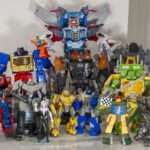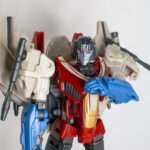Y’know, people talk about how lucky Canadians are that Toys R Us is still a thing up here, and while that’s generally true, there’s a few drawbacks. For one thing, stuff there’s generally a bit more expensive than other retailers, especially exclusives. And as for those exclusives, the stores have a tendency to order big single cases of just one exclusive at a time, which then sit on the shelves, and prevent newer stuff from arriving. Case and point, I haven’t seen Origin Jazz show up locally, because my Toys R Us shelves are clogged with the last two Buzzworthy Bumblebee Deluxes, Silverstreak, and Toy Colors Terrorsaur, both of whom presumably aren’t moving because they’re upcharging their price tags compared to normal Deluxes. So, Origin Jazz was a TFCon pickup, from a local vendor who was selling it for $40 Canadian (no tax), which to me, was worth it to not have to go looking anymore.
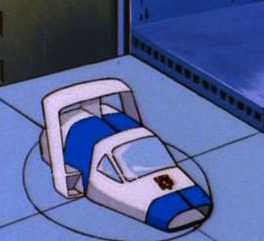
The Origin’s origin.
Now, as for the actual figure, it was always kind of odd that Siege billed itself as an entire toyline more or less based around the Cybertronian scenes from the first episode of the original cartoon, and then didn’t bother giving us figures of any of the three Autobots who actually transformed and showed off their altmodes in the episode (we did get plenty of Tetrajet Seekers, and Lamppost Soundwave, though). So it’s fallen to Buzzworthy Bumblebee, which has rapidly become the official “random miscellaneous stuff we couldn’t fit anywhere else” Transformers toyline, to fill in the gaps. First, they gave us the surprisingly excellent Origin Bumblebee, reviewed here and next up, we have Origin Jazz, based on his tiny first-episode cameo where he changes into a hover-car. I’ve heard really good things about this figure, and frankly, after being lukewarm on Studio Series 86 Jazz (who somehow had zero soul to him, despite technically fulfilling the mission brief) I was looking for another attempt at the Autobot’s cool, cultured second–in-command. So, expect a lot of comparisons to that guy here.
Robot Mode
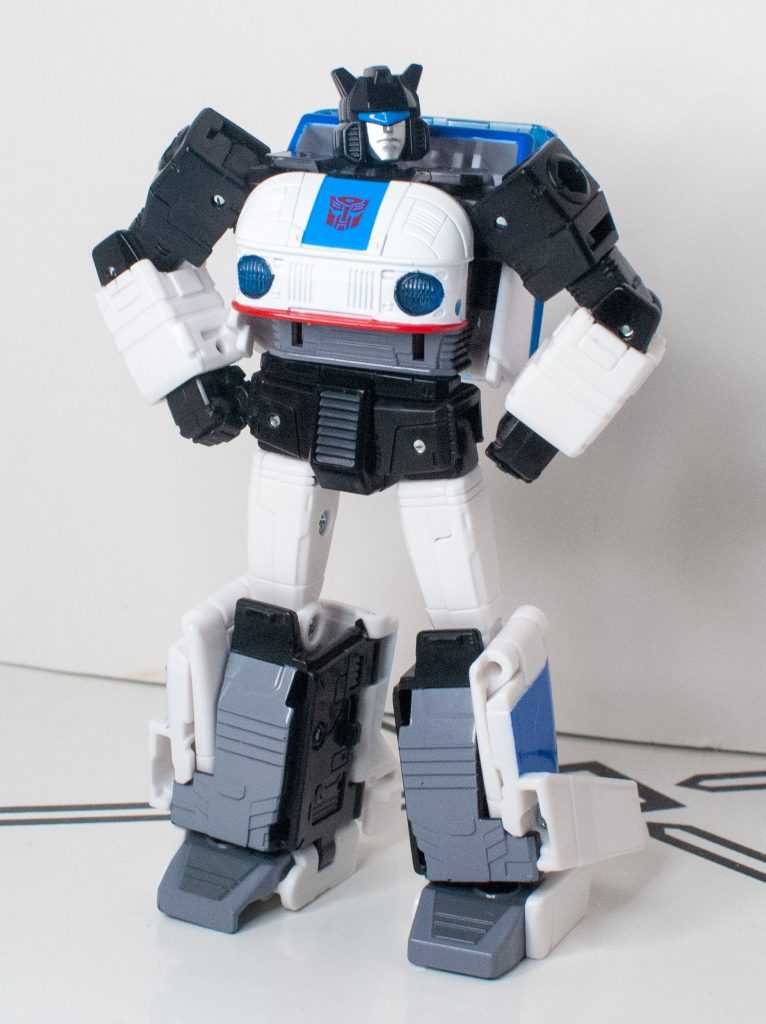
Even standing there, he’s cool.
It’s funny how this guy, Origin Bumblebee, and Siege in general are using so much engineering power to replicate something that the original cartoon did for simplicity’s sake: Not bother giving anyone different robot mode designs on Cybertron, despite them changing into totally different vehicles. So, this version of Jazz aims to base itself on his standard Sunbow animation model, despite not changing into a Porsche. And you know what, it does it well, even better than Bumblebee did.

Defenders of Ancient Cybertron.
Bee had to be covered in a mass of vehicle-mode parts, which the figure did its best to hide, but were still very obviously hanging off of him. Jazz, meanwhile, just has some extra stuff on his legs and backpack, and it’s all pretty well concealed and out of the way.
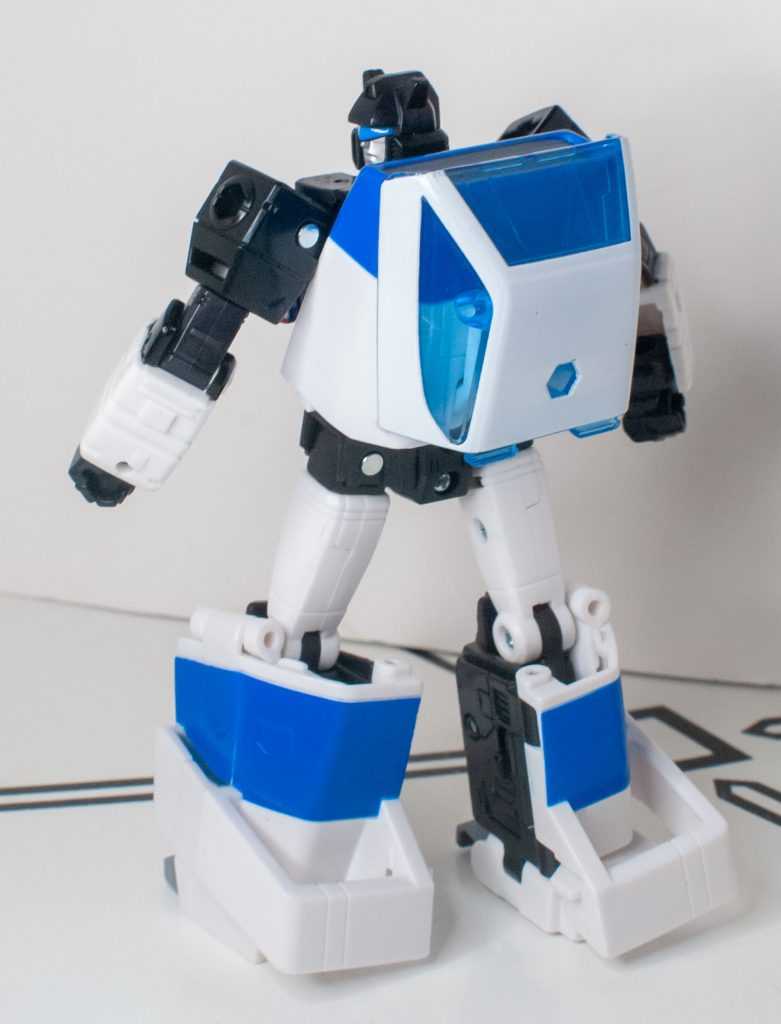
Surprisingly clean!
Heck, compared to the Studio Series 86 one, his backpack’s only marginally bigger. Speaking of that, it’s really interesting to compare the two Jazz figures, in the same size class, released fairly close to each other, both aiming to imitate the same specific design. It’s startling how similar they look.
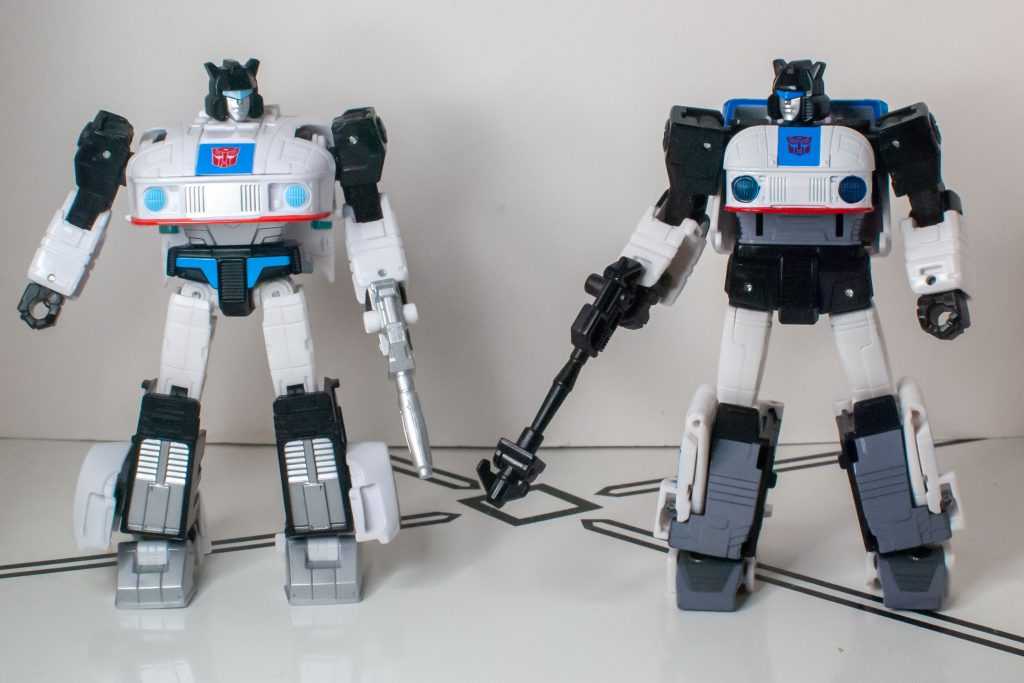
Jazz, and the Cooler Jazz.
Really, the biggest thing about Origin Jazz is that his upper torso is a lot more narrow and slender, thanks to it not containing an actual car-hood, just a fake one sculpted onto his chest, and the fact that he’s missing the altmode wheels on his lower legs.
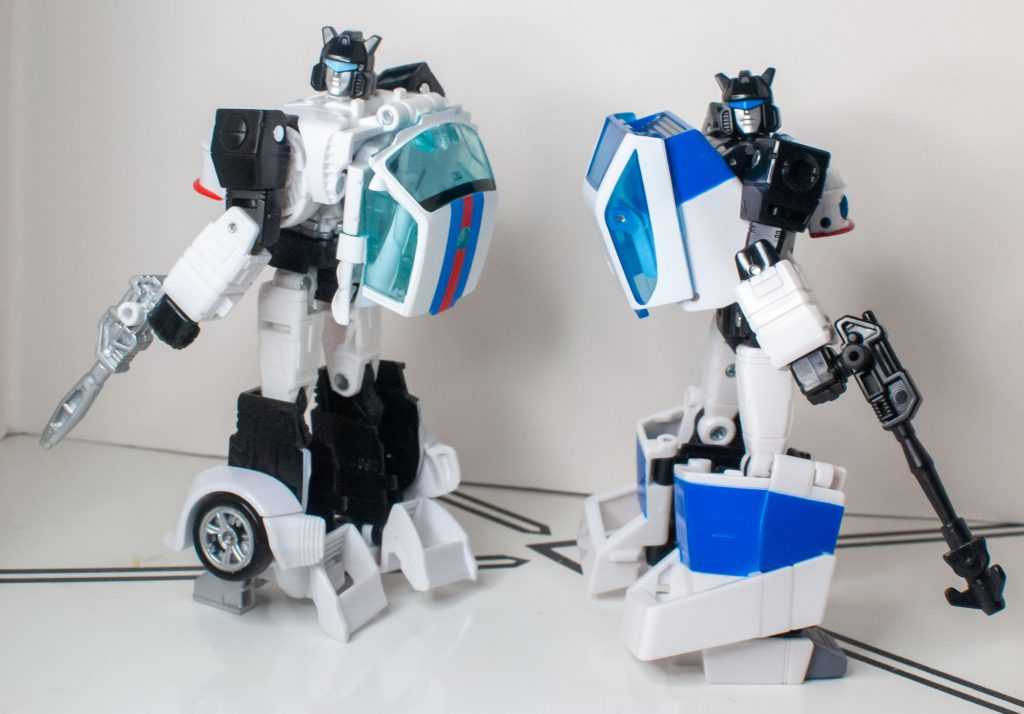
Even the altmode parts aren’t much of a downgrade.
Importantly, it looks good, and feels like the character, especially with that headsculpt, which somehow manages to nail his animation appearance marginally better than the 86 one, to my eyes.
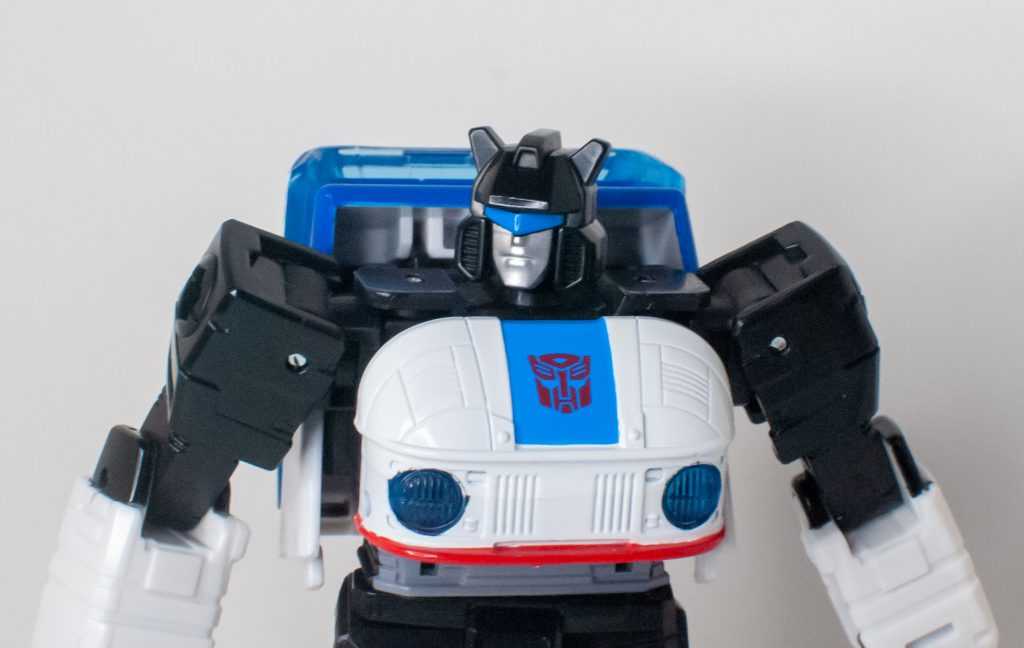
A facefull of vibes.
This feeling extends to his colors, which are the typical Jazz black and white, with bits of blue, red, and gray. Interestingly, they opted to go with a more flat gray, as opposed to the 86er’s silvery colors, giving him a more cartoony vibe.
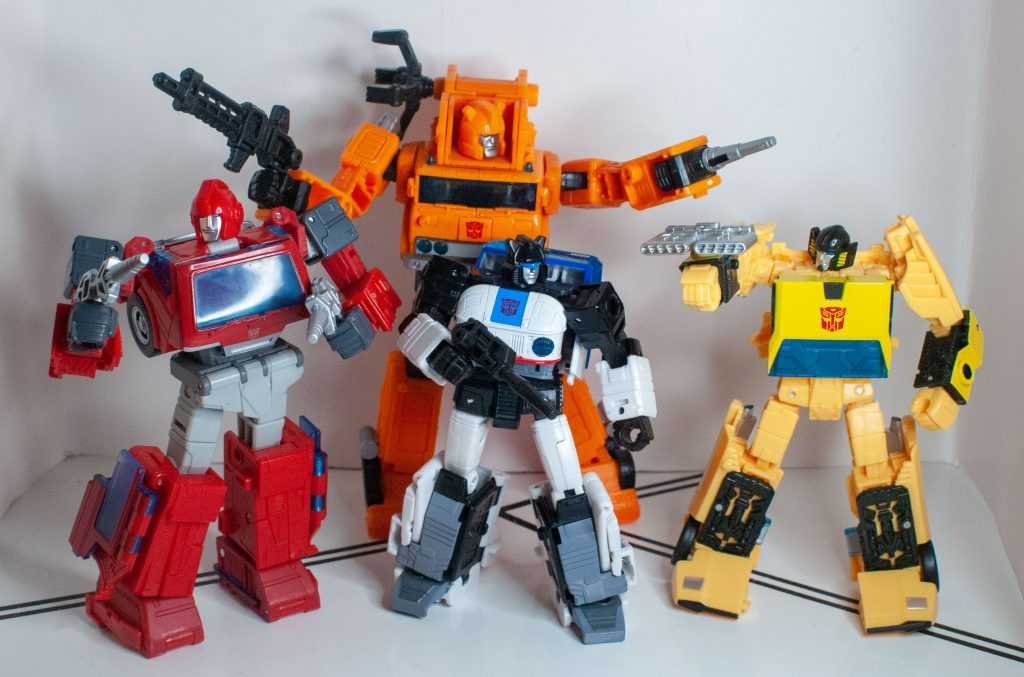
It lets him fit amongst his earthly brethren.
And while we’re comparing them, he has nearly all of the same hits of paint as the 86er as well, with only one big one missing: the blue accents on his pelvis. But I don’t miss them, and you can call it accurate to the shot in the first episode where he transforms and talks to Optimus, because they forgot to fill them in there, too. Also, interestingly, his visor’s a darker blue, and I think it looks better.
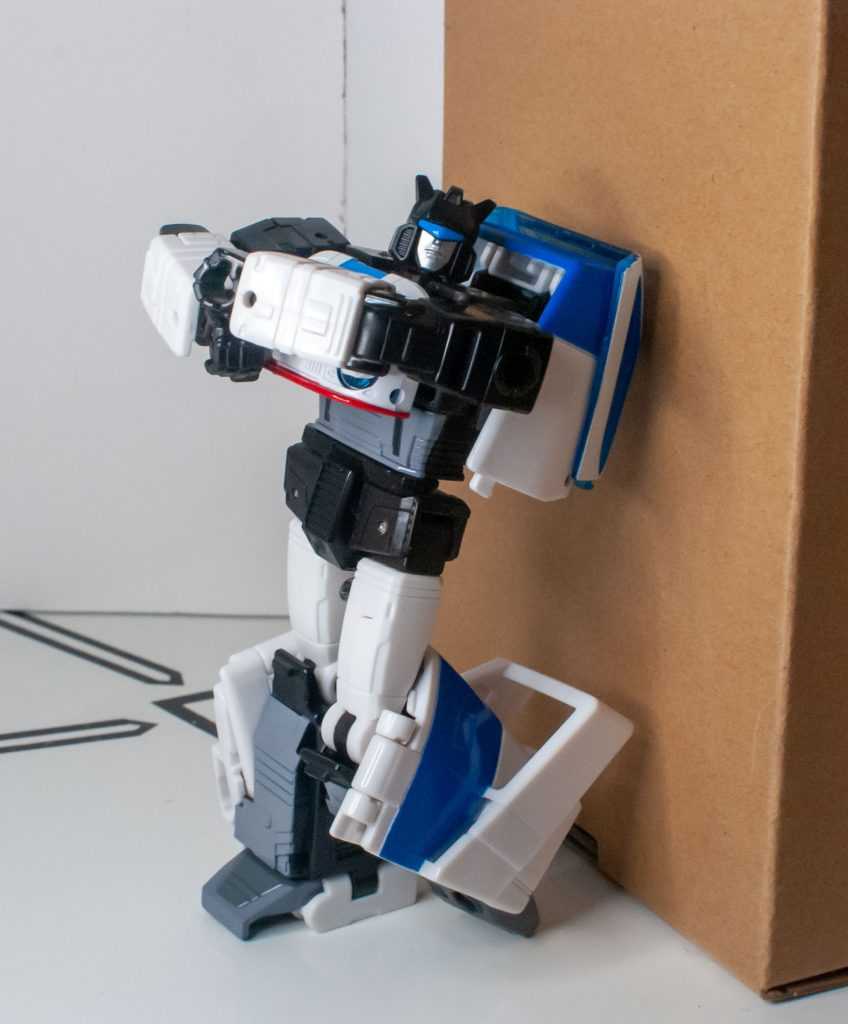
Effortlessly chill.
Here’s the best thing about him: He feels amazing in-hand, largely thanks to how clean his design is. Origin Bumblebee felt good, but he still suffered from his pile of altmode parts making him feel fiddly, and the fact that some of them would pop off if you weren’t careful. That’s not the case on this guy, where everything on him is solid, and everything stays out of the way. And he feels incredibly durable, too, which comes as a relief after 86 Jazz had that scary, breakable-feeling backpack of Clear Plastic, along with his general panelly hollow-ness. This one’s very grabbable-feeling, like you want to pick him up and pose him, and he feels sturdy the whole way through.
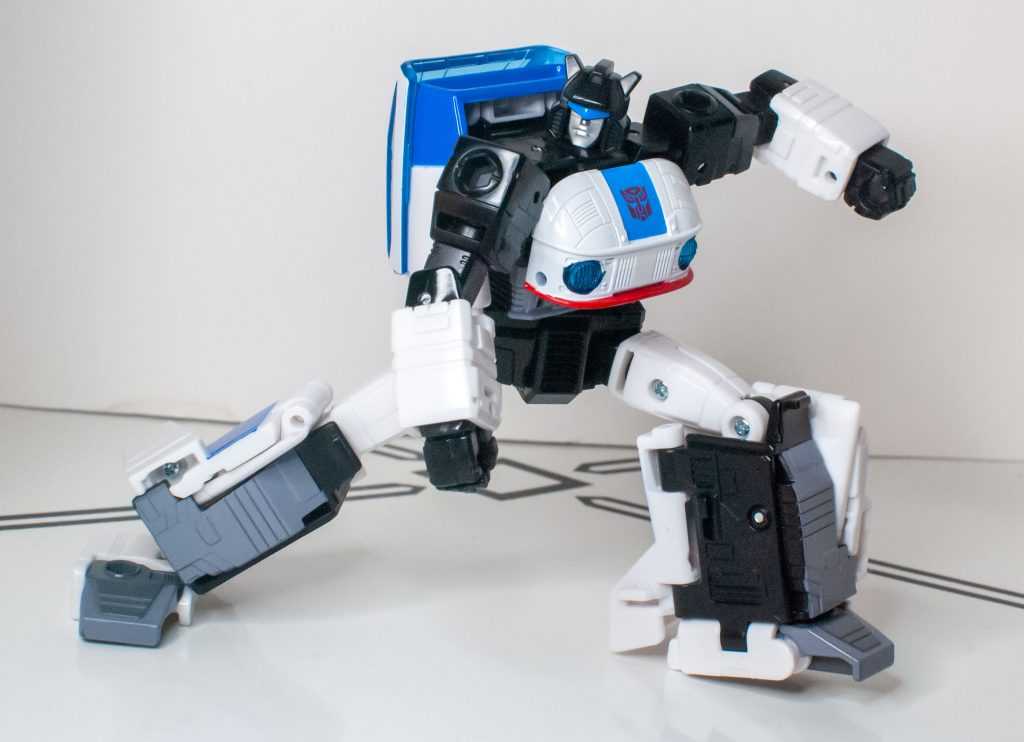
Unlike the Bay bot, he’ll stay in one piece.
And that’s great, because he’s loaded up with a ton of articulation, the full post-Siege suite, minus wrist swivels. Bonuses include ankle tilts that go deep, the kind of hips that can extend really far, rocking shoulders, and a head with enough wiggle to look up and down. I did some comparisons side-by-side, and yes, he can outdo the Studio one in terms of specific bends.
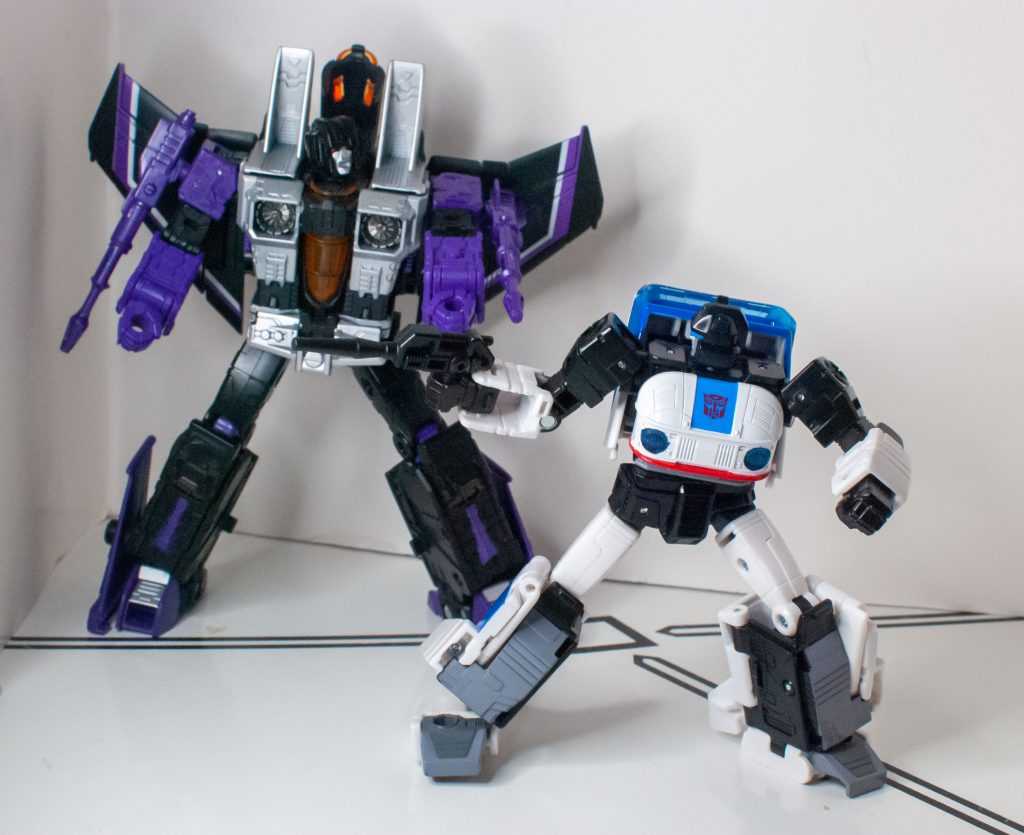
Perfect for a Bot of Action.
For accessories, Origin Jazz also comes with a little bit more. To start with, he comes with his traditional Jazz gun, cast in black instead of silver.
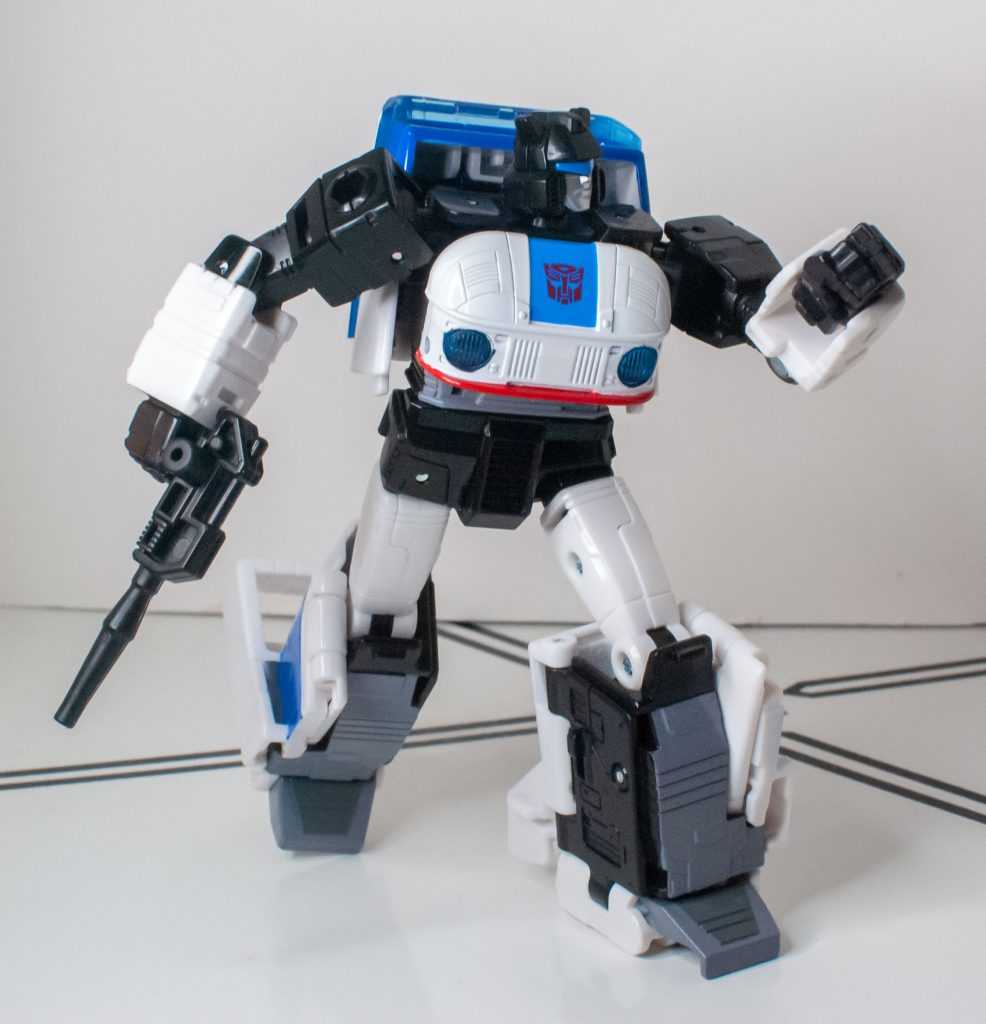
It looks like it Pews Good.
They probably left it unpainted so as to not scratch it up, because it has Action Features (™) with his two other accessories: A grapple hook, and a small square-ish mounting piece/launcher for it (sadly, non-functional, for looks only). You can opt to mount the two pieces on the end of his gun, and turn it into a Batman-esque grapple launcher.

About to zoom away into the night.
if you want to imitate the G1-cartoon-style wrist-weapons so many of these guys have, you can flip away one of his fists, and plug the launcher or grapple in there.
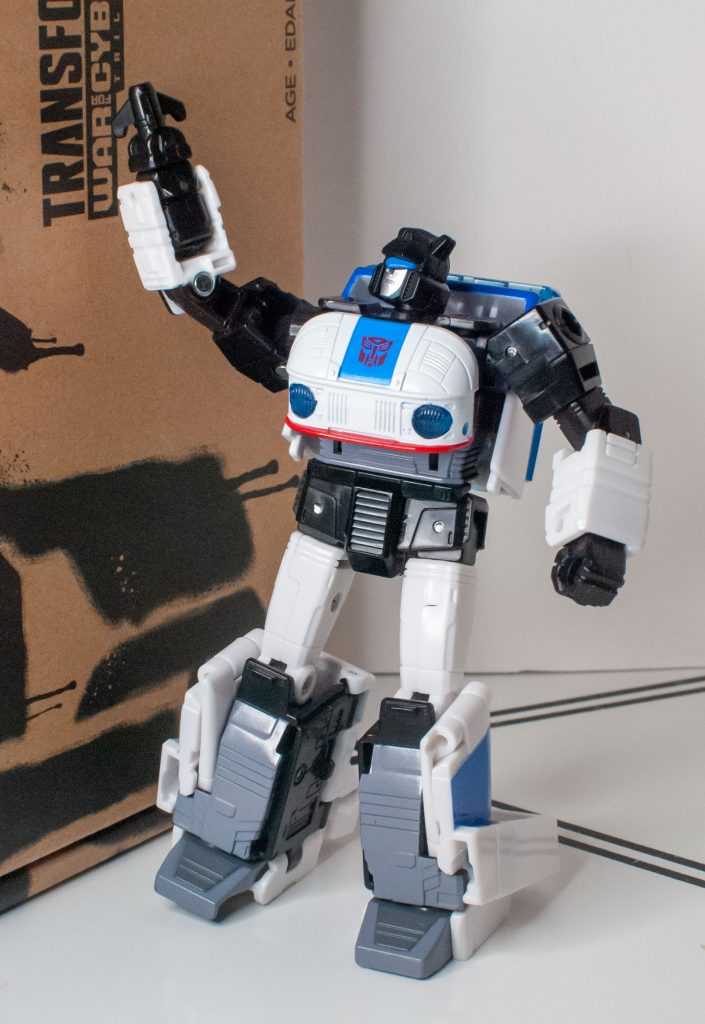
If I had an old-fashioned plastic twist-tie on hand, I bet I could make this look authentic.
And they even found space on him for weapons ports! Not a ton, but he’s got some on his feet, shoulders and back, plus his gun’s got an extra peg on its side. It’s just enough to give him an air of accessory flexibility, and it fixes yet another complaint I had about the Studio Series 86 figure, in that he had almost no ports, and one lone accessory.
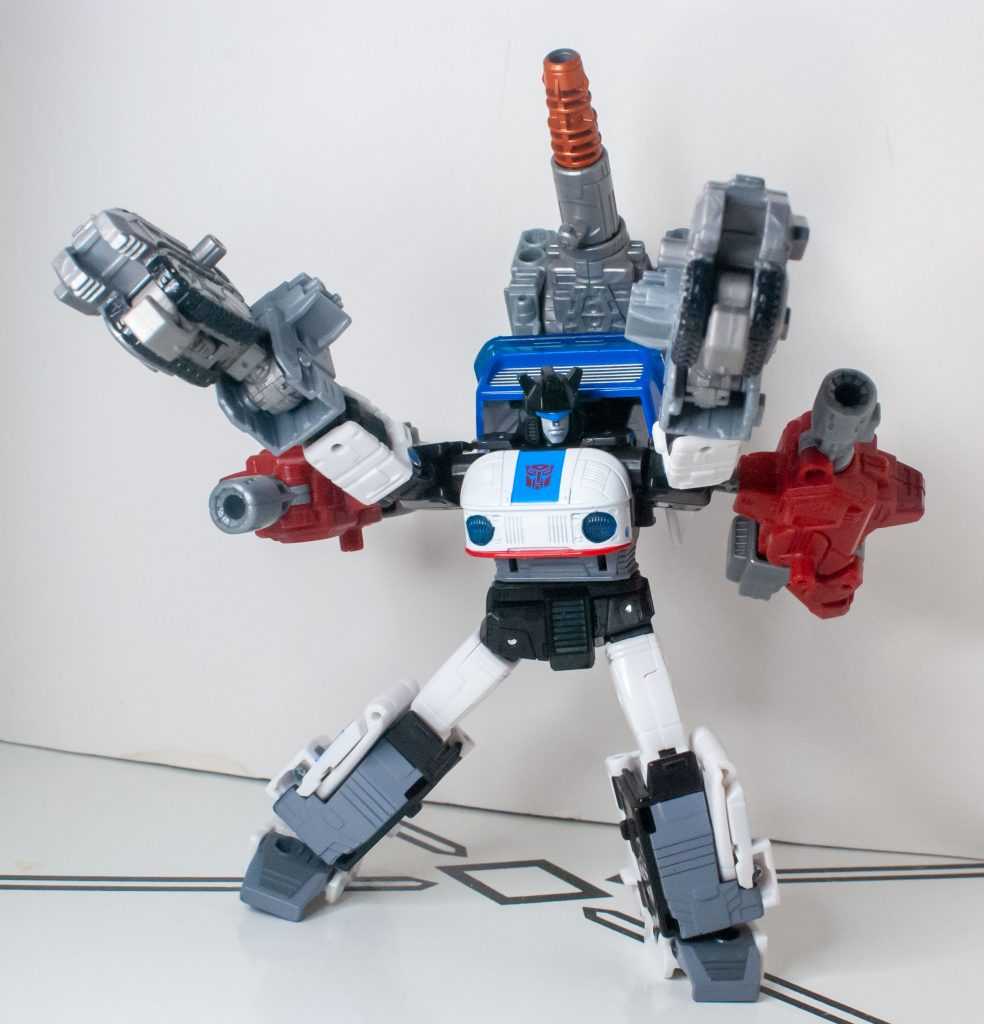
He can’t figure out why they needed to give him Lobster Claws, but he’s making it work.
Now, if only there was an actual string, or wire, or something for the grapple. That and I’m paranoid about losing the launcher and grapple, they’re small black plastic accessories with no real dedicated storage spot on him, unless you’ve got the grapple gun out. Seriously, one went flying on the ground while I was writing this up, and I spent a few minutes trying to find it.
Transformation
This is another huge success, compared to Origin Bumblebee. And Bee’s transformation wasn’t even bad, it was just a ton of panel-massaging shell-forming. While this is also technically a shellformer, in that you’re compressing the robot and building the vehicle around him, it manages to be a lot simpler, thanks to it only involving big panels, and large motions. I will say, the leg panels were so tight initially, that I wasn’t sure if the instructions were correct, but after popping them out for the first time, they gave me way less trouble.
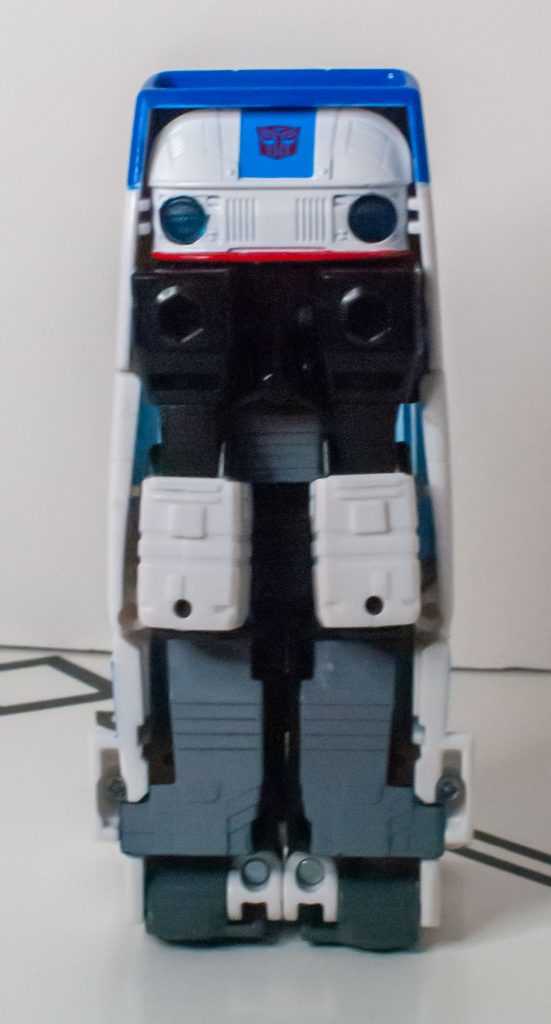
From the bottom, you’re really just compressing him, and hiding his face with the fake Porsche hood.
There is one challenging bit, though, and it’s getting his vehicle mode doors into their final position, where they need to tab underneath the front of the vehicle, and into the sides of his arms at the same time. Some finagling is required. That, and his legs compress in a way that feels unintuitive, unless you disobey the order of the instructions and keep his leg panels open while you compress them, so you can see where everything goes. Still, it’s way easier and more intuitive than I was expecting, and is probably the least shellformer-y shellformer I’ve ever handled.
Vehicle Mode

*Stock Scifi Hovering Noises*
This is an extremely faithful replica of Jazz’s hover-car alternate mode from the cartoon’s first episode, a kind of rectangular, swooshy box, with a big, square hovercraft-like spoiler at the back. Like Bumblebee, its exact shape changed from shot to shot, so it sometimes had a more tapered front than what we have here, but there’s room for interpretation.
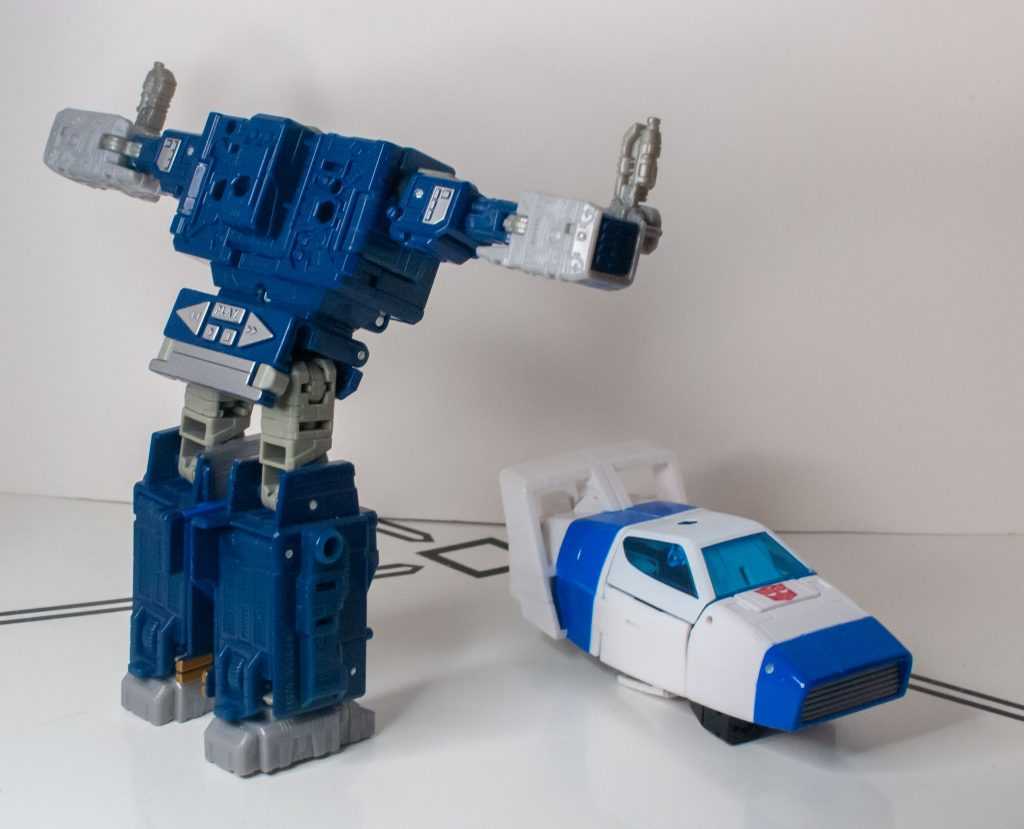
The important shot.
It’s a charming design, sort of Jetsons-adjacent, and this take on it adds a tasteful bit of detail across the body, like door-handles, and vents, presumably to make the transformation seams less obvious, an effect that works.
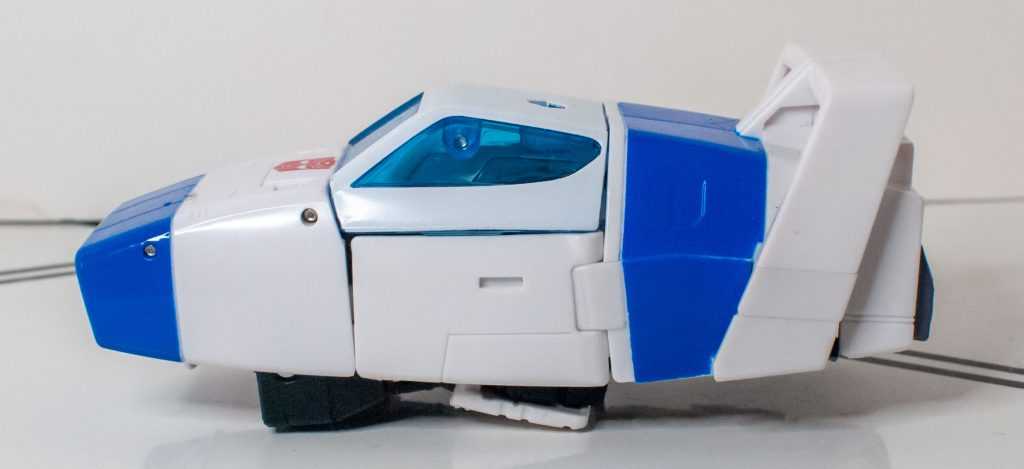
The luxury model of the space-future.
Down below, I was initially disappointed at how his arms hung out of the bottom of the car, until I realized it was for a clever reason: when you place him on a surface, it makes him look like he’s hovering. Most importantly, he stays together really solidly. His lack of tiny panels means nothing about him feels loose or fiddly, he’s just a tight brick of a space-vehicle.
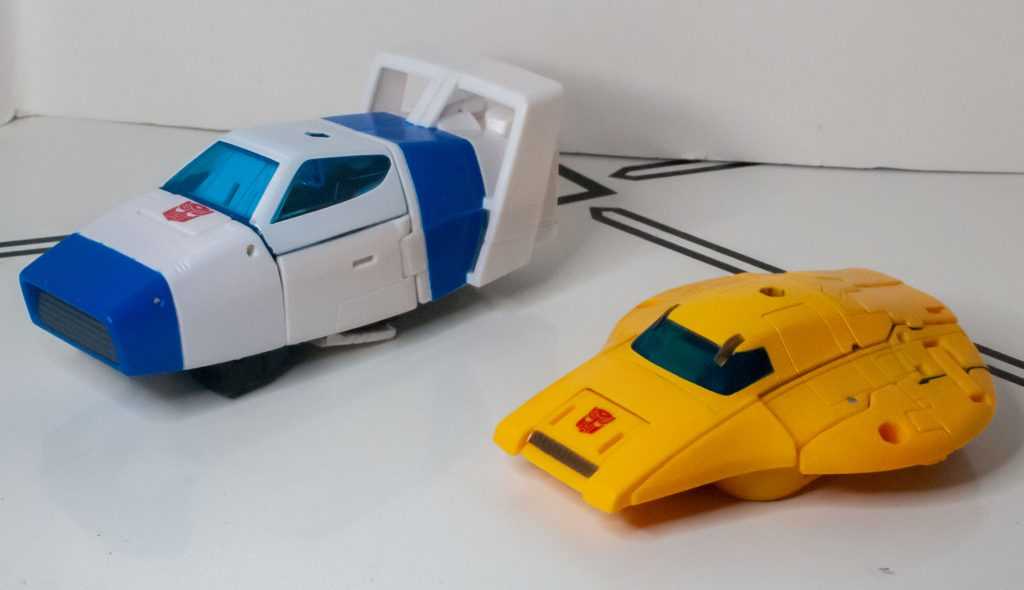
I feel like the scale on these is not quite the same. Not that it really matters.
For colors, he’s a lot more basic in this form, mostly just white and blue, in a color layout that makes you think of the car he doesn’t turn into.
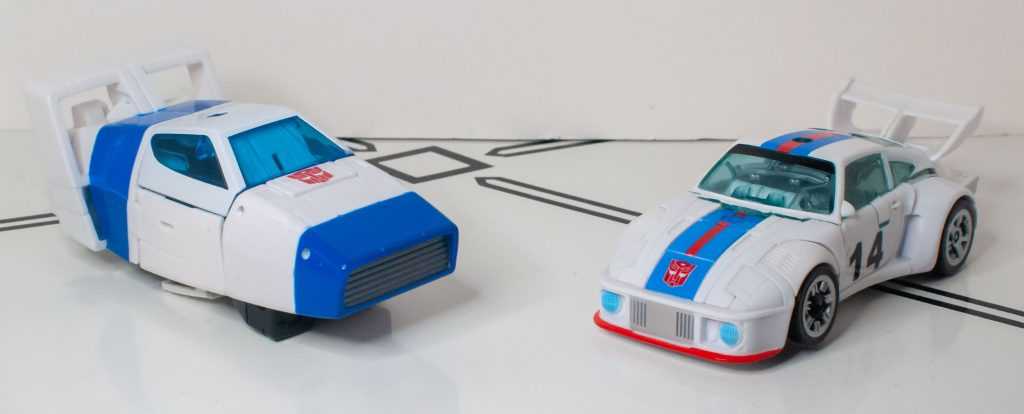
Like so.
Aside from that, he’s got clear blue windows, a big red Autobrand on the hood, and a little bit of silver on the front and rear of the vehicle. It’s pretty basic, but that’s what he looked like on the show. I will say that the roof of the vehicle does seem to be missing specks of white paint right out of the box, but I can Gundam Marker over that with ease.
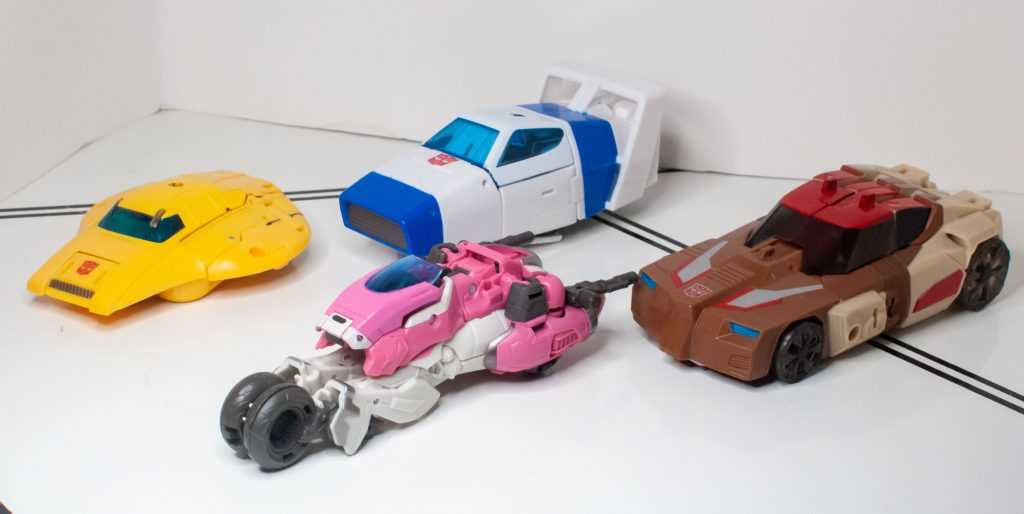
Cybertron modes can actually get pretty diverse.
For features, it’s pretty much limited to the weapons port on his roof, and the two at the back of the alternate mode.
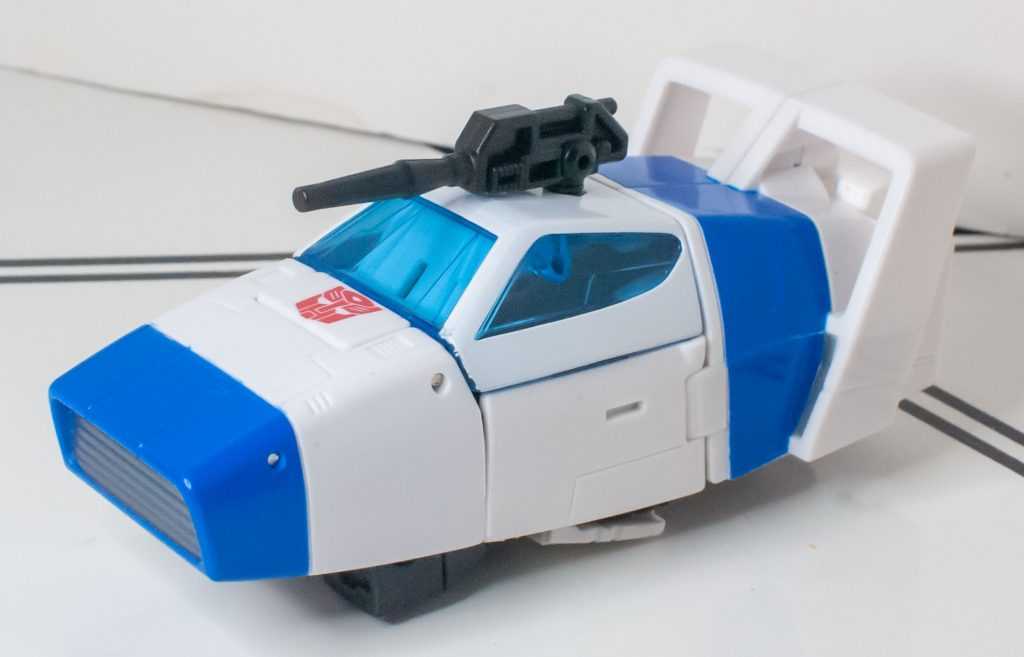
For when the traffic is really bad.
You can mount his gun up top, as the instructions suggest,or you can use the peg on the side of it to store it behind him, too (or turn those rear mounted pegs into rocket jets with any spare effect parts you’ve got).
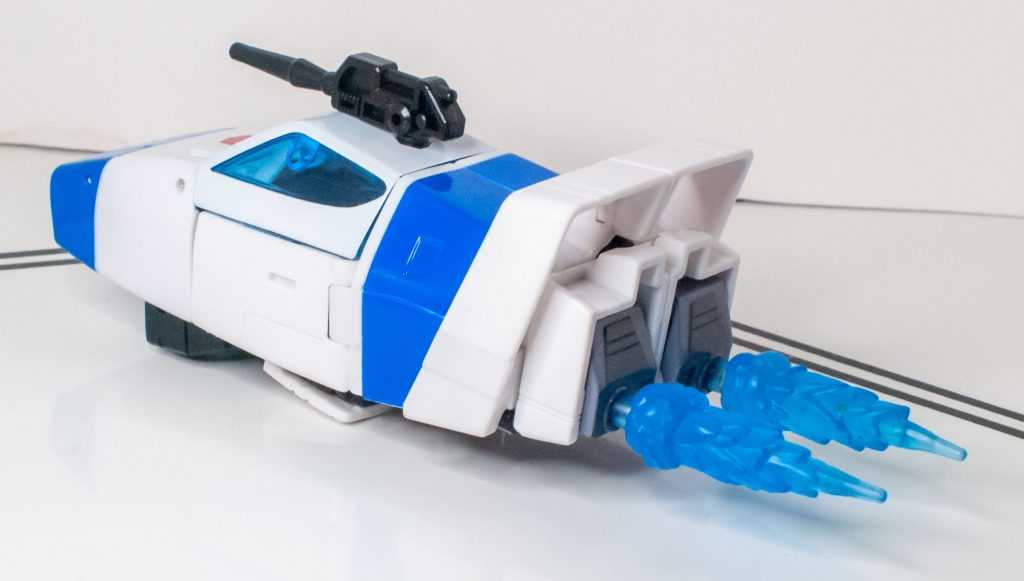
SHOOM!!
You can technically also use the grapple pieces, but they stash beneath him in the middle of his transformation, and you need to undo his arms to fish them out. That, and you can always decide to armor up this swooshy space vehicle.
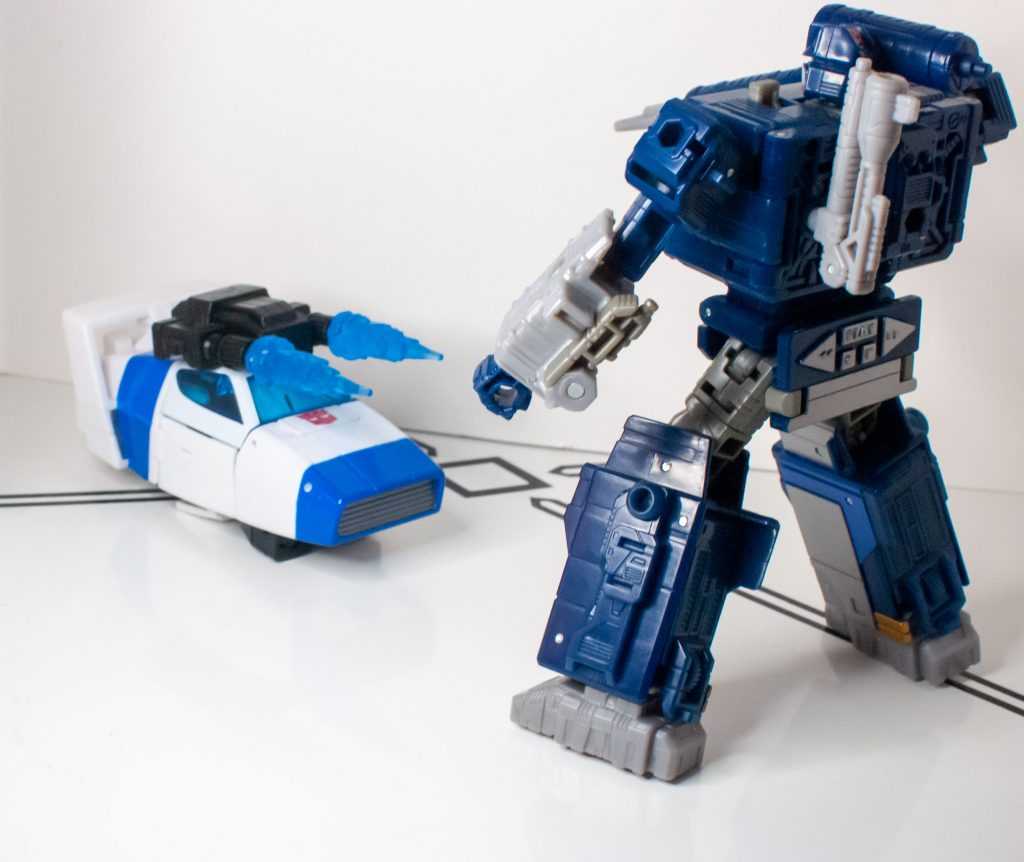
“Did you really think I didn’t notice you?”
Overall
Yeah, this is a really good one. It’s not just that he takes the bizarre first-episode engineering idea (normal robot mode, space vehicle mode) and pulls it off really well, it’s that he pulls it off even better than the already great Origin Bumblebee did. But beyond that, he’s just a really good figure in general, no caveats. He does everything right, is well-designed, poseable, fun, and has good engineering. But more than that, he’s got a little something extra that’s hard to quantify. Some kind of sauce, or juice, or drip, or some kind of odd food metaphor. It’s mostly noticeable because Studio Series 86 Jazz did not have it, and I noticed its absence there, too. This is a fun figure, not a box-checker, and it feels like it was made with more heart, if that makes sense.
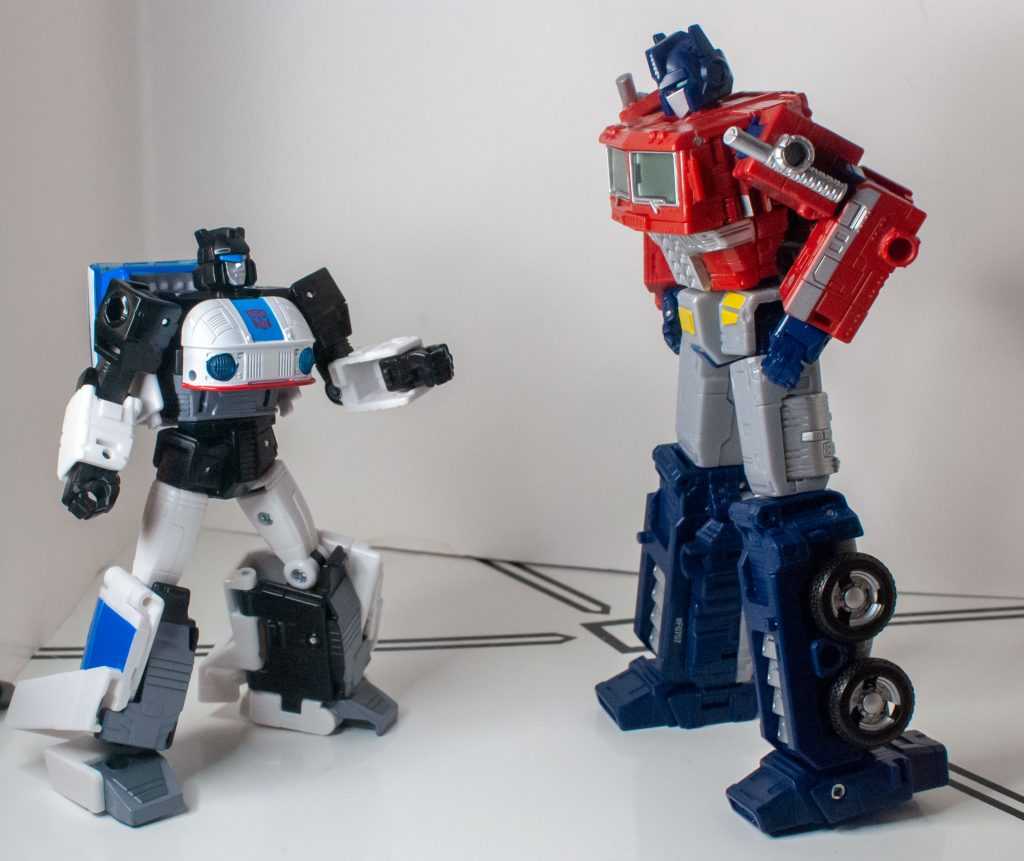
“Optimus, you’ve gotta tell me. Am I the second-in-command? Or is it Prowl? Or Ironhide?”
Here’s my hot take: Not only is this a better figure than the Studio Series 86 one, this is the Jazz that should be on your shelf instead if you’re looking to collect Generations G1 Autobots, no matter what he changes into. He’s just that well-done.
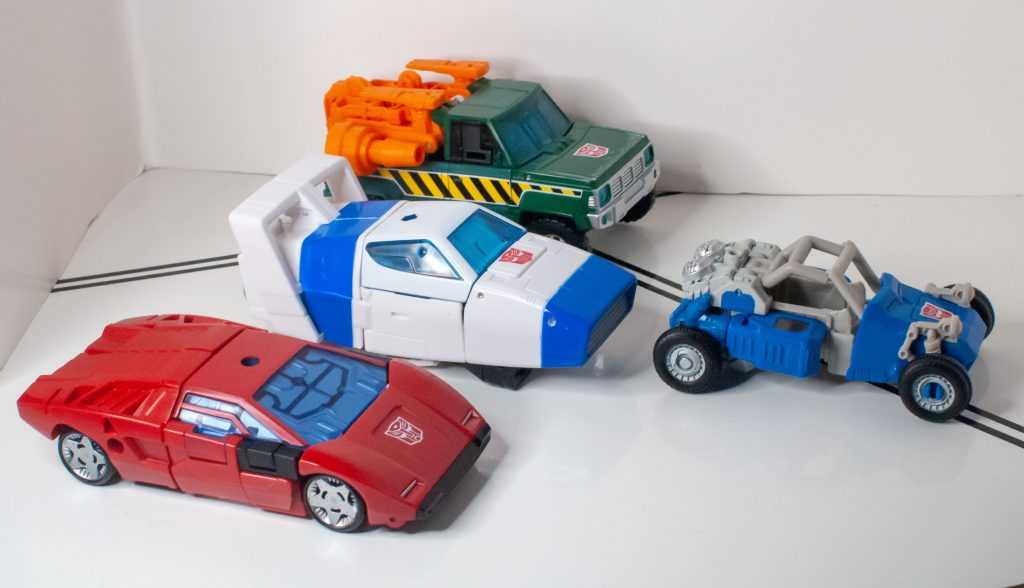
Just pretend he’s a weird concept car. It’s not like any of these guys change into real cars anymore, anyway.
So, if you can find him (a challenge if you’re in Canada), make it your business to get one, he’s very worth it.
For over 100 Bot, Non-Bot, and Retro Bot Reviews, click here to view my archive.

